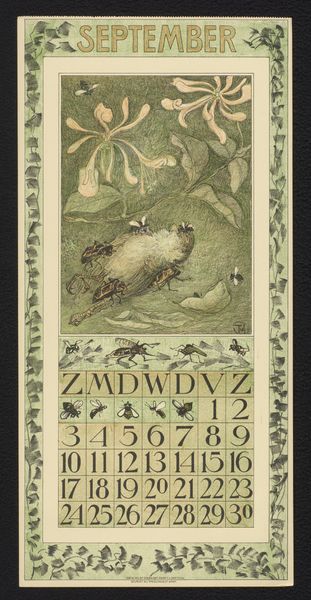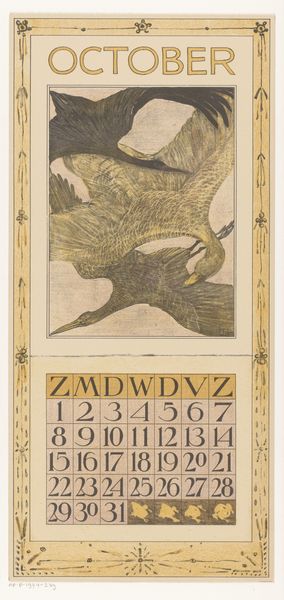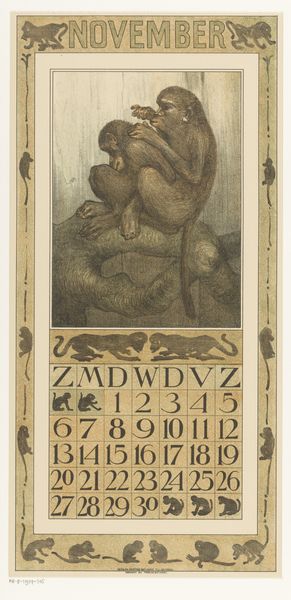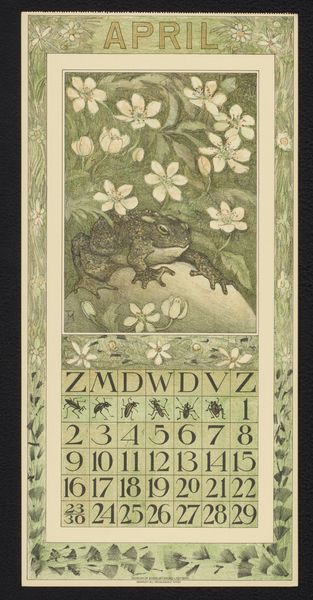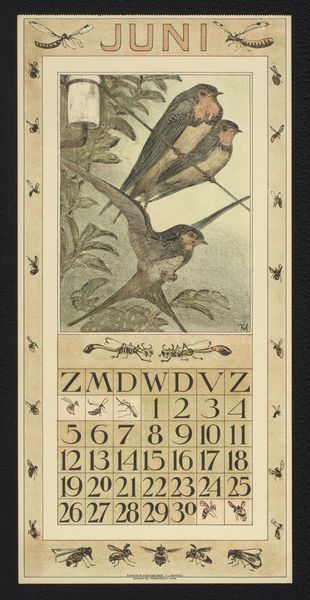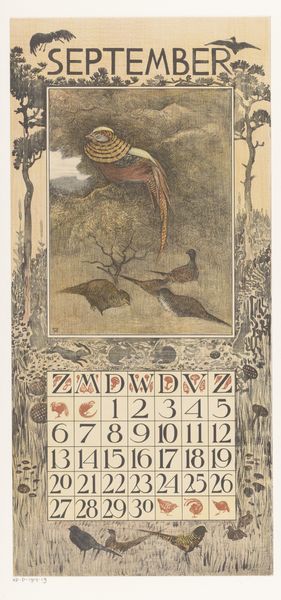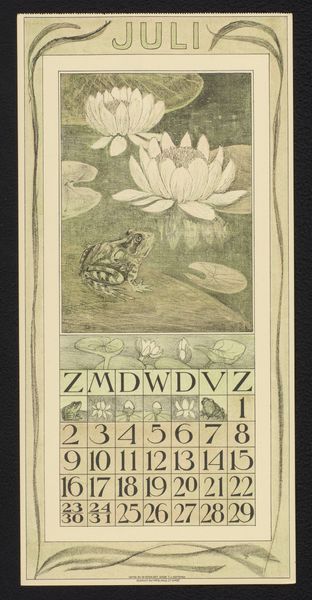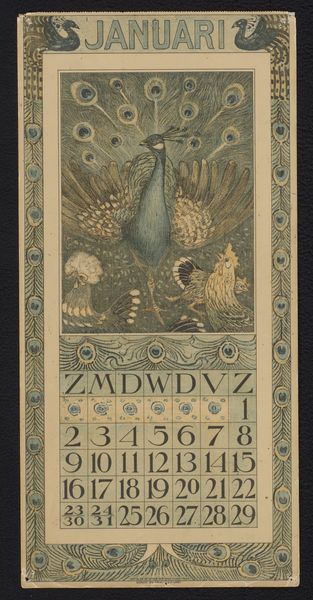
drawing, print, woodcut
#
drawing
#
art-nouveau
# print
#
woodcut effect
#
landscape
#
linocut print
#
woodcut
#
decorative-art
Dimensions: height 439 mm, width 212 mm
Copyright: Rijks Museum: Open Domain
Editor: Here we have Theo van Hoytema’s "Kalenderblad voor maart 1911 met elzenkatjes", or "Calendar Page for March 1911 with Alder Catkins," created around 1910. I find its decorative style so appealing, but beyond the pretty imagery, what's significant about a calendar being elevated to art? Curator: That’s a crucial question. Think about the social context of the late 19th and early 20th centuries. There was a growing Arts and Crafts movement that championed artisanal production against industrialization. Hoytema's calendar participates in that discourse, elevating a utilitarian object, something mass-produced and disposable, to the level of art. By using techniques like woodcut and drawing, he’s imbuing it with a handmade quality that resists the coldness of industrial printing. Consider who might have purchased this, too. Editor: So it’s a rejection of mass production, and perhaps for a more elite audience who could afford this kind of specialized piece? Curator: Exactly. It speaks to anxieties around changing modes of production and consumption. The imagery, focusing on nature and seasonal change, also idealizes a simpler, pre-industrial world. Notice how the Art Nouveau style further enhances that association. The swirling lines and organic forms were fashionable, of course, but how does it shape perceptions of progress? Editor: I see how that romanticized view of nature clashes with the rapid industrial and social change occurring at the time. I guess what I appreciate as 'pretty imagery' really represents a political position! Curator: Precisely! And understanding that enriches our experience of the work immensely. It's a great example of how even seemingly innocuous art objects are deeply embedded in the politics of their time. Editor: It gives me a whole new perspective on what might have otherwise looked like a simple, decorative calendar page. Curator: Indeed.
Comments
No comments
Be the first to comment and join the conversation on the ultimate creative platform.



